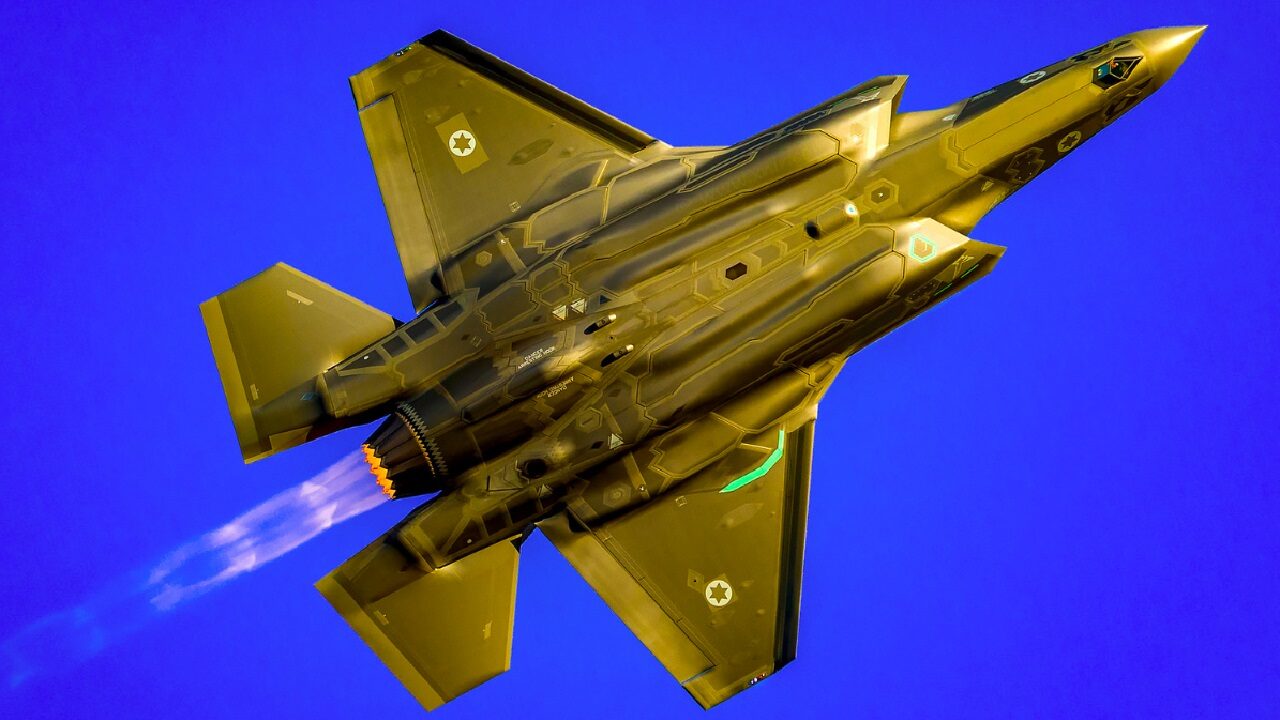As the shadow war between Iran and Israel continues, the Jewish state is continuing to build up its arsenal of advanced weapons systems.
Last month, the Israeli Air Force procured a new batch of F-35I Adir fighter jets.
140th Squadron welcomed three new airframes, which have the flight numbers 958, 959 and 960.
While Israel already flies 50 of these cutting-edge fifth-generation fighters, the country recently signed a deal to purchase an additional 25 jets worth $3 billion.
The American-made F-35 platform is widely considered to be the best of its kind, and Israel’s fleet of Adir fighters makes it even more formidable.
Israel’s History With the F-35I Adir Fighter
Israel’s relationship with the top-tier fighter program dates back to the early 2000s, when the IAF sought to replace its aging fleet of F-16 Fighting Falcons.
Notably, Israel became the first foreign client-state to procure the F-35 Lightning II in 2010, when the program’s nine-nation co-development group allowed the Jewish state to acquire a specially modified variant of the airframe. Manufacturer Lockheed Martin agreed to develop a distinct prototype for the IAF that would serve Israel’s unique mission sets.
This was notable since the Pentagon is loath to allow even the slightest foreign-requested alterations to F-35s.
What Sets the “Mighty One” Apart From Other F-35s?
Aviation buffs and military experts largely agree that the F-35 Lightning II is unparalleled. The fifth-generation powerhouse comes equipped with a host of cutting-edge capabilities and specs that make it respected and feared by foreign militaries. Israel’s specialized F-35 variant, however, may actually top the American version.
The F-35I Adir “Mighty One” carries domestically produced air-to-air missiles and guided bombs in its internal weapons bays. Additionally, the Israeli variant features an IAF-specific helmet-mounted display and unique datalink functionality for the service, among other enhancements that improve the jet’s already high-tech data gathering and processing capabilities.
The Mighty One’s domestically produced electronic warfare system (EWS) ensures that this fighter will maintain an edge over enemy counterparts. Since Israel’s top adversaries include regional proxy groups that cannot match its aerial capabilities, including the Lebanon-based Hezbollah and the Gaza-based Hamas, a tailored EWS system is critical to the IDF.
As detailed by Kris Osborn, “Cutting-edge EW systems are able to discern and ‘deconflict’ the spectrum to identify hostile or threatening frequencies and RF signatures to establish a ‘line of bearing’ and succeed in jamming or disabling enemy communications or weapons guidance systems. Developers say the system introduces 360-degree detection, greater ranges and signal fidelity, and advanced countermeasures.” Essentially, the IAF can jam the guidance systems of enemy-launched anti-aircraft weapons.
Two Israeli Air Force squadrons currently fly the Adir, including the 140th Golden Eagle Squadron based at Nevatim Base and the 116th Lions of the South Squadron. Additional F-35 Adir variants are also flown for training purposes.
Israel’s already robust air force will only become more lethal once it procures the two dozen F-35 airframes it is contracted to.
Maya Carlin, a Senior Editor for 19FortyFive, is an analyst with the Center for Security Policy and a former Anna Sobol Levy Fellow at IDC Herzliya in Israel. She has by-lines in many publications, including The National Interest, Jerusalem Post, and Times of Israel. You can follow her on Twitter: @MayaCarlin.
From 19FortyFive
The Navy Sent 4 Battleships To Attack North Korea
‘Sir, We Hit a Russian Submarine’: A U.S. Navy Sub Collided with a Nuclear Attack Sub

